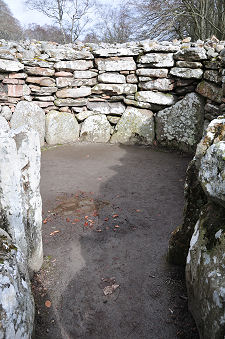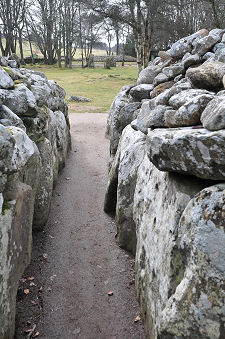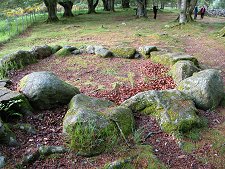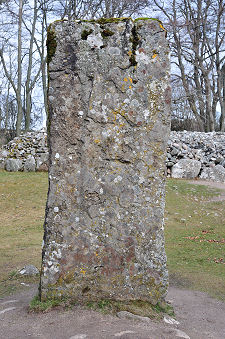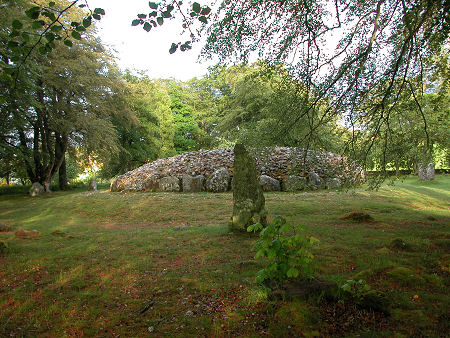 The North-East Passage Cairn from the East |
Culloden battlefield, a few miles to the east of Inverness attracts a huge number of visitors every each year. But only a few of those visitors realise that only a mile to the south-east lies a very different link with the past, every bit as evocative as Culloden and in many ways more tangible, despite dating back to around 2000BC.
Following the brown tourist signs to Clava Cairns takes you down some very minor roads and close to a spectacular railway viaduct en route to the car park for what are more fully known as the Prehistoric Burial Cairns of Balnuaran of Clava. You can see why the signposts stick with "Clava Cairns".
There are three burial cairns at Balnuaran, and they are part of a line of seven dotted along the south side of the valley of the River Nairn. These together form part of a group of some 45 very distinctive cairns in northern Inverness-shire, all called Clava Cairns after this location, which is where they were first studied. What sets them apart is their construction within a "kerb", a ring of large containing boulders. (Continues below image...)
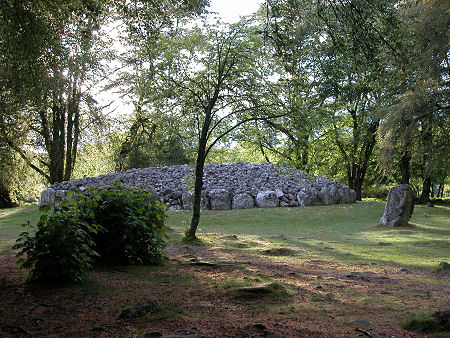 The Middle Cairn |
Clava Cairns come in two types, and both are represented in the group of three you find in the truly wonderful woodland setting at Balnuaran. There are larger prehistoric sites in Scotland, and there are much better known ones: but we have yet to come across one with such variety and interest in such a beautiful setting.
The North-East and South-West Cairns are knows as passage graves. Here the inner chamber remains linked to the outside world by a passage. Both are no more than a metre or so in height, but when originally constructed the cairns are likely to have been around 3m or 10ft in height.
The North-East Passage Grave (the one nearest the car park) is interesting in having a large number of "cup" marks and some "ring" marks inscribed on one of the kerb stones. Both of the passage graves have a surrounding circle of widely spaced standing stones: though sadly the stone circle surrounding the South-West Passage Grave has a road going through it, leaving one stone marooned on the far side of the road and another forming part of the fence.
The central cairn at Balnuaran is of the second type of Clava Cairn, a ring cairn. This differs from the other two in having no passageway linking the central camber with the outside. Like the others it is surrounded by a ring of standing stones, nine in this case, of which some have been broken. One unusual feature is the way that the central cairn is linked to three of its enclosing circle of standing stones by lines of turf covered stones. No-one knows their purpose, and it might well be possible that they were added very much later than the date of construction of the cairns. Another later addition is likely to have been the much smaller ring of kerb stones on the north-east side of the site not far from the central cairn.
It may be the product of over-active imaginations, but a long stone low in the side of one of the passages does look very like it might carry an inscription in Ogham script: or the pattern might be the result of natural erosion.
The Clava Cairns lie not much more than a cannon shot away from Culloden, and Jacobites fleeing the carnage of the battle may well have passed this way. Yet it is worth remembering that the seemingly large distance in time back to the very different world of Culloden, over two and a half centuries, is just a small fraction of the distance we'd have to travel back in time to meet the builders of these cairns.
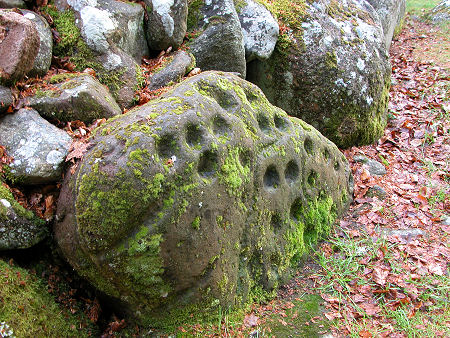 Cup Marks on Rock |
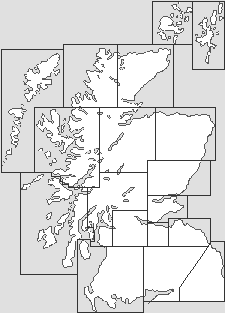
|
|
|
Visitor InformationView Location on MapGrid Ref: NH 752 439 www.historicenvironment.scot HES: Cairns Web Page Open all year and admission is free. What3Words Location: ///abstracts.stirs.funny |
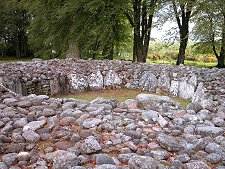 Central Ring Cairn |
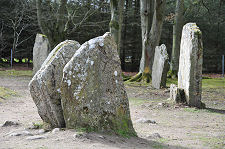 Standing Stones |
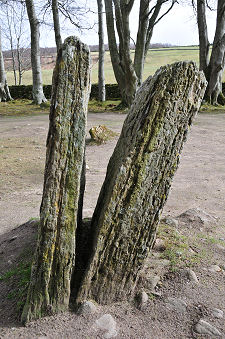 Paired Standing Stone |
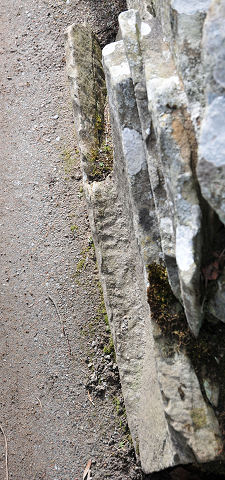 Erosion, or Ogham Script? |
